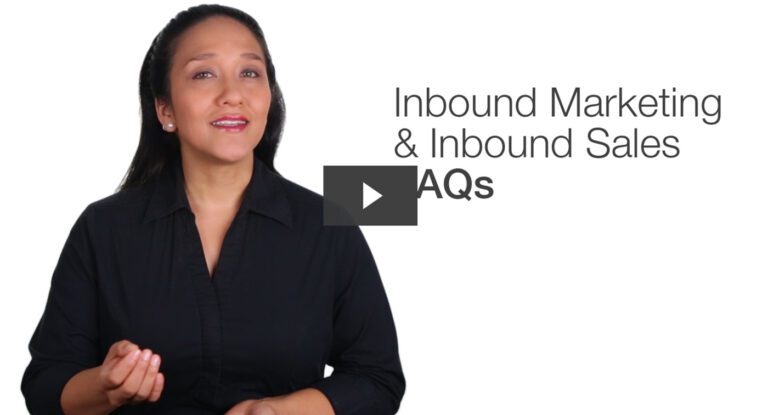So, you’ve been working hard on your site SEO, drawing people to your site with your out-of-this-world content. But you aren’t seeing an increase in customers. What’s up with that? Well, if you don’t have landing pages, we’ve come to the root of your problem. If you don’t have a way to capture visitor information, how will you make meaningful contact with them in the future? Let’s go over the big picture and learn how best to employ landing pages to your benefit.
What’s a Landing Page?
A landing page is a web page that allows you to capture a visitor’s information through a lead form. A good landing page will target a particular audience, for example: traffic from an email campaign may direct to a particular eBook, or visitors who click on a pay-per-click ad may lead them to a specific campaign. Therefore, it’s important to build a unique landing page for each of the offers you create. You can build landing pages that allow visitors to download your content offers (eBooks, whitepapers, webinars, etc.), or sign up for offers like free trials or demos of your product.
What are the landing page optimization best practices?
1. Use a clear title, description, and layout to instantly convey the value of your offer and create a strong incentive for your visitors to download or sign up for it.
2. Keep your visitors focused on filling out your form by removing all distractions, including navigation links, from the landing page.
3. Include social sharing links to encourage your visitors to spread the word about your offer.
4. Design your forms to capture the information that you need the most in order to follow up with and qualify the lead.
5. Structure the forms with the user in mind so they’re not too long or invasive.
6. After they have filled out your form, follow up with your new leads by directing them to a “thank-you” page or sending them an autoresponse email. Keep them engaged by suggesting other offers they might be interested in or suggesting next steps they can take.
7. Track your conversion rates closely, and keep testing to find areas for improvement. Use your metrics and test results to optimize your landing pages so they continue to generate more leads.
Should I include social media contact information on landing pages?
Just like any other page of your website, it’s important to have social media sharing links on your landing pages. You have a huge crowd of awesome marketers at your fingertips – your audience! If your visitors decide to download your offer, why not invite them to share your content and encourage more people to download your offer?
Once you’ve converted your visitors into leads, enable them to easily spread the news about the offer with their Facebook friends, Twitter followers, and LinkedIn connections. The more prospects you drive to your landing pages, the more leads you’ll be able to generate.
How should I share my landing pages on social media?
As we mentioned, Twitter gives you the opportunity to customize tweets for your share links. Even though you are limited to 140 characters, there are three main components you’ll want to include in your tweet.
An @ Mention of Your Company
It’s important to include this from a branding perspective, in order to spread the message about your company along with your offer.
The Title of Your Offer
Make sure to include the name or a description of why someone would want to read, watch, or sign up for it. This will serve as the “body” of your tweet.
A Link to Your Landing Page
Your goal is to direct more viewers to your landing page so you should always include a link in your tweets. Use a bit.ly to shorten it, or let Twitter shorten your link automatically.
Should I include a FAQ on my landing page?
Adding an FAQ or Q&A portion to your landing pages helps qualify the content as relevant or irrelevant to the search engines. The more valuable information you can provide in text format the better for search engine ranking.
How can I get more traffic to my landing page?
Organic link building is a great way to increase traffic. White hat inbound link building is also a great way to boost conversion. The more relevant inbound links a landing page has, the better credibility it will gain with search engines. The catch here is to create a great offer that people want to share organically.
What is A/B testing?
A/B testing for landing pages is when you create two or more versions of your landing page and test a specific element. For instance, one of your landing pages can include a testimonial while the other doesn’t. You then have to promote that offer to two or more different (but equal in size) audiences simultaneously. By tracking the performance of each, you understand which variation yields better results. A/B testing is a scientific approach to helping you develop a successful conversion strategy.
Why should I A/B test?
If you’re creating landing pages with forms, then you already understand how important lead generation is to monetize your site traffic and meet your marketing and sales goals. You already spend countless hours creating remarkable content to drive traffic to your site. So you want to be sure you’re capturing as many of those visitors as possible, don’t you? Running A/B tests on your website is a great way to learn how to generate more leads from the traffic you’re getting. Just a few small tweaks to a form or changing your call-to-action could have a significant effect your lead flow. Plus, chances are, your competitors aren’t A/B testing, as only 40% of marketers utilize this optimization technique for their landing pages. If you haven’t already, it’s time you get started with this powerful lead generation tool.
How can I use A/B testing to improve landing page performance?
Typically, with A/B testing, only one element of a page is manipulated at a time in order to isolate that variable as the cause of any change you might see. in other words, if I wanted to test my form placement, I would keep everything else constant across both variations so that I know that any change in conversion rate is most likely from the different form placement.
However, you can also consider the entire landing page a “variable” and test entirely different versions against each other. While this diminishes confidence in the exact features that cause any difference in your results, page level testing often delivers faster and more insightful results. Therefore, it’s a good idea to try A/B testing at both the incremental and page level.
How do I analyze my A/B test results?
However you choose to conduct your A/B tests, in order to analyze your results, you need to track and evaluate the click-through rate of the ‘submit’ button on the form, which will indicate that page’s conversion rate. Then, you’ll need to compare conversion rates for each of the page variables you test. Before coming to any strong conclusions, you’ll also need to make sure that your results are statistically significant to determine if any difference you see between variables is what truly influenced the change in people’s behavior. To determine if your test is statistically significant, you need to compare the p-value and significance level of your test with some complicated math, but luckily there are tools on the internet that will do it for you.
We hoped this has de-cluttered the landing page landscape a bit for you. Keep your landing pages offer-specific and frequently tested, and watch your conversion rates rise.
Subscribe to our BLOG
Stay in touch & learn how to attract customers, become a thought leader, create effective marketing campaigns, & more.





